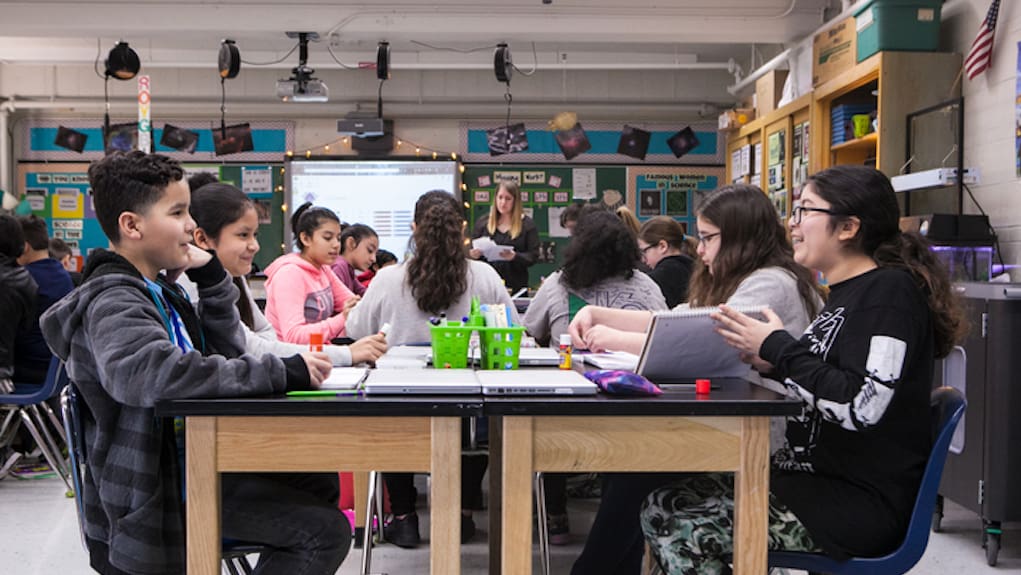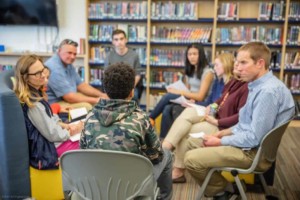Classcraft: Transforming the Classroom into a Cooperative Challenge

Gamification can be a valuable classroom practice, and tools that purport to be worthwhile resources have flooded the market as EdTech has become a daily part of more and more students’ lives.
Unfortunately, perhaps more so than with other EdTech-based practices, gamification tools often suffer the all-too-common issue of being a screen-based facsimile of a 20th-century learning style. It is far too easy to make an “educational game” that is little more than a glorified, sparkly worksheet.
Just like all instructional practices, effective gamification requires a holistic approach that entails a defined and measurable end goal with specific steps to get there. What those goals are, and the best strategies for achieving them, usually cannot be fully addressed in a “game.”
Enter EdTech startup Classcraft, which today announced that it has closed $2.8 million of early-stage venture capital funding (Whitecap Venture Partners led the funding round with Brightspark Ventures, along with MaRS Catalyst Fund, which is backed by Richard Branson’s Virgin Unite) to scale the platform.

Classcraft is a classroom role-playing game that places students on real-life teams, and rewards them with in-game and real-life rewards based on their behavior. The experience is fully customizable by the teacher, which means that the more than 2,500,000 users of Classcraft are treated to classrooms that have been fundamentally and effectively re-imagined as collaborative games.
How It Started, How It Works
I had the chance to speak with Shawn Young, CEO of Classcraft, about what had inspired him to create the game, where it’s been, and where it’s headed.
Young had been a high school physics teacher for 9 years when he developed an “ugly spreadsheet” type of organizational experience for a classroom-based, role-playing game. After a positive response from his class, he spent a weekend building it into a one-page website.
“My students participate more, are self-motivated, and more thoughtful with their words and actions. I love that the lessons I teach feel less like work and more like an adventure!” – Rob McKenzie, Donald E. Schick School
A student then posted the website to Reddit, where it reached the front page of the site’s busiest gaming forum. Within a week his site had received 150,000 visitors, and Young had received thousands of requests for access to his system. It was at this point that he decided to recruit his brother, Devin, and father, Lauren, to turn the game into a company.
Three years later, it has developed into a popular platform reaching students across the world. Why did it become so popular?
Among teachers, it is popular for gamifying a range of everyday demands of the classroom, but also for its impressive approach to developing students’ social-emotional and teamwork skills.

The game puts students into teams of warriors, healers and mages. Students are given “experience points” for things like supporting their team when someone is in need, or for trying to answer a challenging question in class (though the reward mechanisms are fully customizable).
Students can trade their experience points for in-game rewards (such as new “gear,” like armor, pets or weapons) or customizable real-life “abilities” (the chance to eat a snack in class or turn in an assignment a day late). Young says that he has been surprised by how many students use their points for in-game rewards, saying that while it makes sense in retrospect, he would not have anticipated students using this as such a big part of their classroom identity-building.

Teams receive “batch damage” when they fail to work together effectively, or even when one member of the team is not receiving the support they need. “Boss battles” provide opportunities for in-game quizzes.

Because the game is based on real-life socialization, it can be truly meaningful to students. It encourages engagement on a fundamental level that the average leaderboard/”next level” mechanism will often fail to achieve.
On that note, there are no leaderboards in Classcraft. “It’s all about social interactions,” says Young. “With a leaderboard, the students in the middle are encouraged to try to reach the top. But what about the students at the top and, more importantly, the students at the bottom? That doesn’t encourage engagement for those students.” Instead, Classcraft focuses on 21st-century skills like SEL and collaboration, all while fitting seamlessly into any subject matter you could throw at it.
“Classcraft has taught my students that collaboration is the key to great learning.”
– Rafael Miranda, teacher at Colegio Montessori
And, while the platform does not feature student leaderboards, teachers have access to analytics on stats such as student health and experience points over time. This might seem like a somewhat roundabout way to think of these things, but assessing SEL is a challenge that by its nature is bound to require a bit of abstraction.

What’s Next?
The recent round of funding has enabled the Classcraft team to expand from 13 employees to 30. They are driven to continually innovate, Young says, and will be focused in the near future on product development, creating personalized learning components, and further developing the analytics system, among other things. They plan to create an API that will allow the game to integrate seemlessly with Google Classroom, MicrosoftEDU and any other number of tools (think Quizlet).
“We’re extremely lucky to have high-quality investors that care about social impact,” Young says.

New technologies can offer an almost endless number of options for gamification, but few companies are creating customizable experiences that integrate easily into the classroom while providing benefits to SEL and student engagement. I’m excited to see what Classcraft does with this new round of funding.
For more, see:
- 8 Principles of Productive Gamification
- 7 Reasons and Resources for EdTech Gamification
- 5 Emerging Trends in 21st-Century Education
Stay in-the-know with all things EdTech and innovations in learning by signing up to receive the weekly Smart Update.







0 Comments
Leave a Comment
Your email address will not be published. All fields are required.